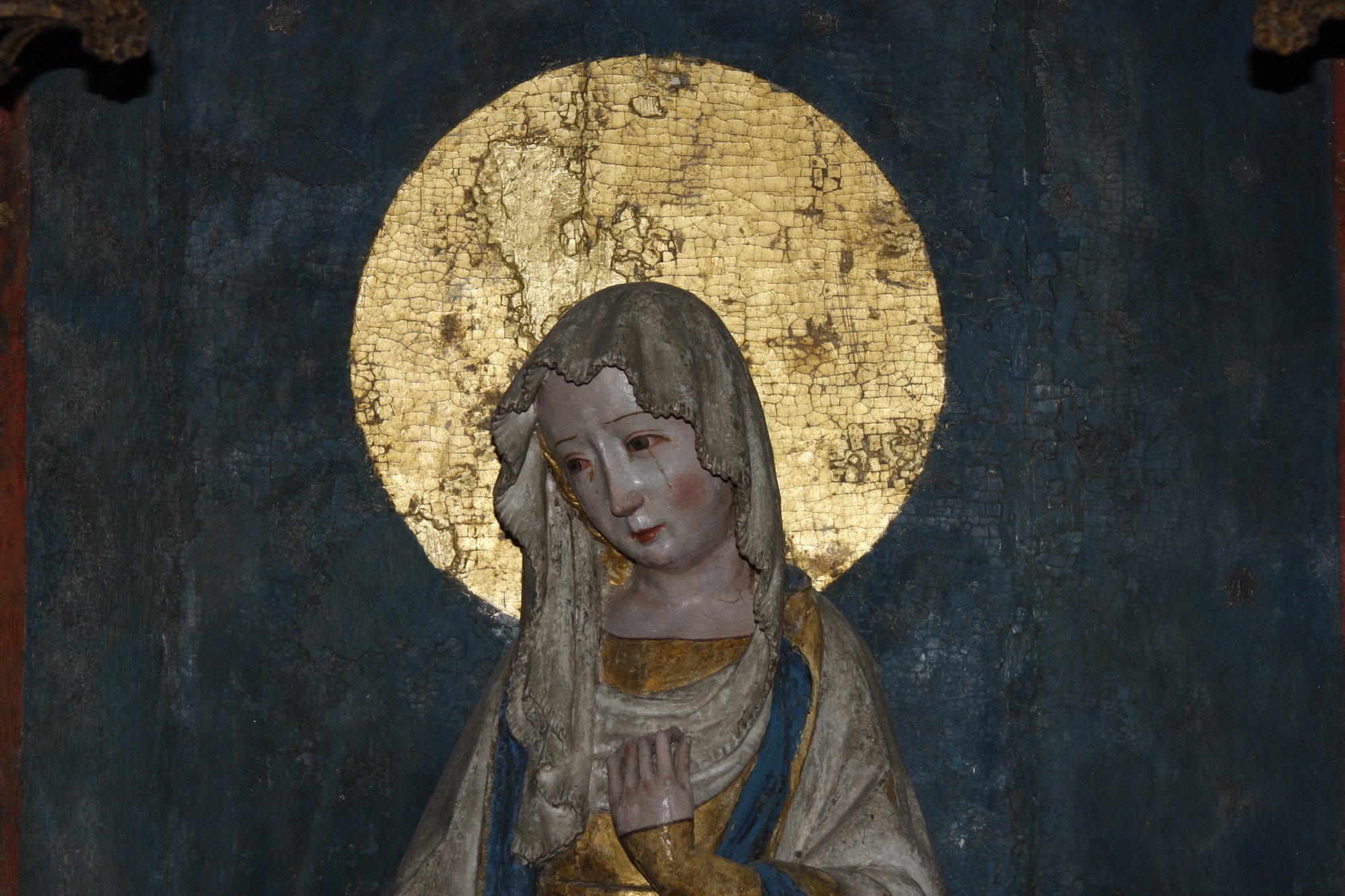In Askeby, as in Vreta, a convent for women was founded during the 12th century. However, Askeby became “the defeated abbey,” both spiritually and politically. It was damaged already during the time it served as an abbey, and was finally ruined after the Reformation. After this, the abbey became essentially anonymous. The families which had given their support had already lost the political game. The abbey was demolished, the bricks were reused, and the abbey yard was transformed into a turnaround for horse carriages to the part of the church that was used as a granary from the 1770s. The turnaround expanded. And this resulted in that parts of the east side abbey walls were torn down. Askeby granary became of great use for the parish, as it was a meeting point for peasant from four districts – which was somewhat of a new golden age for the parish.
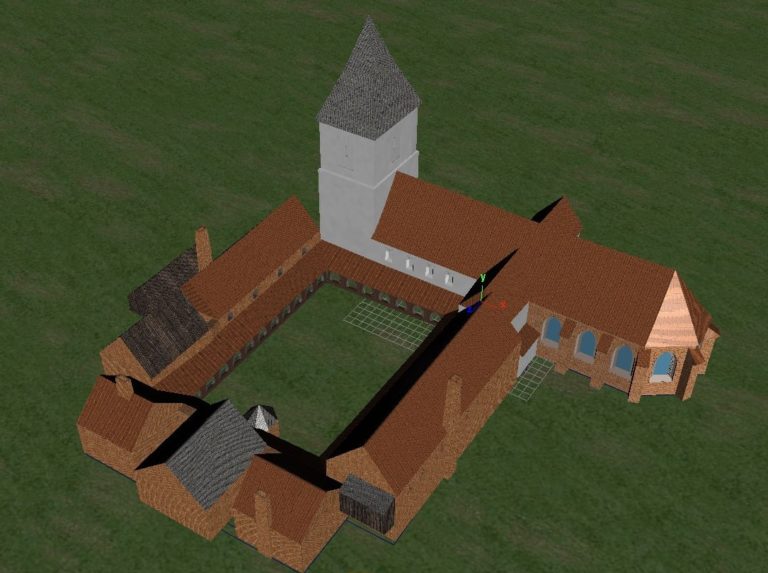
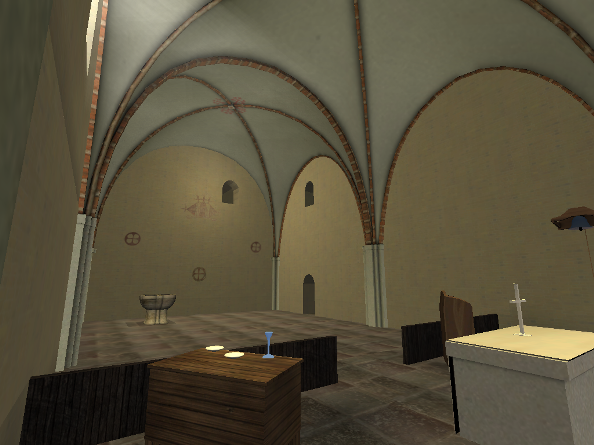
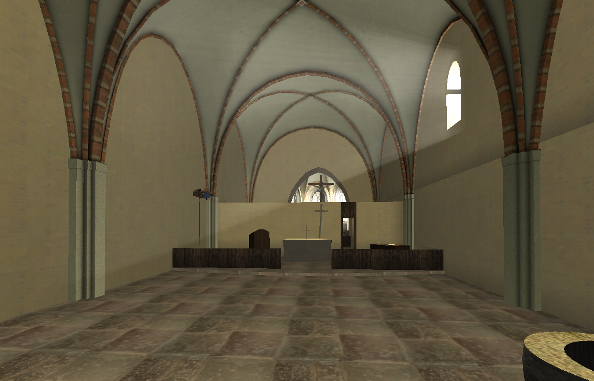
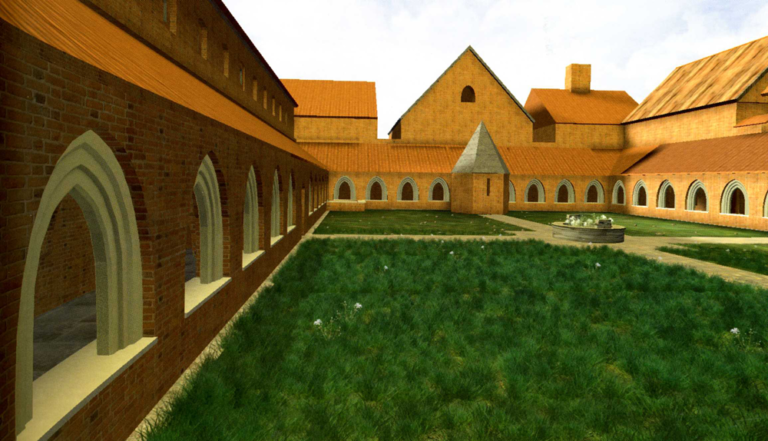
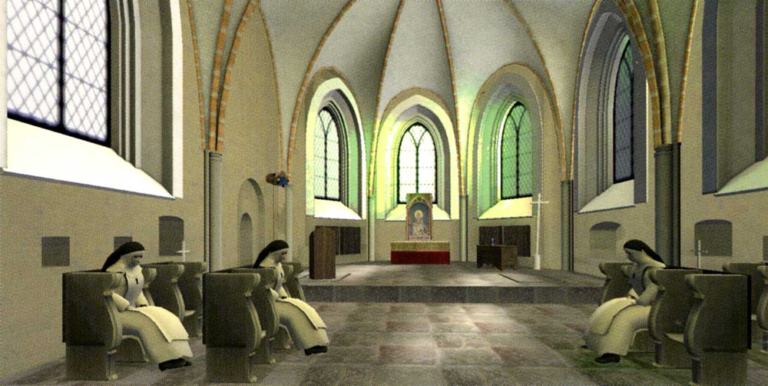
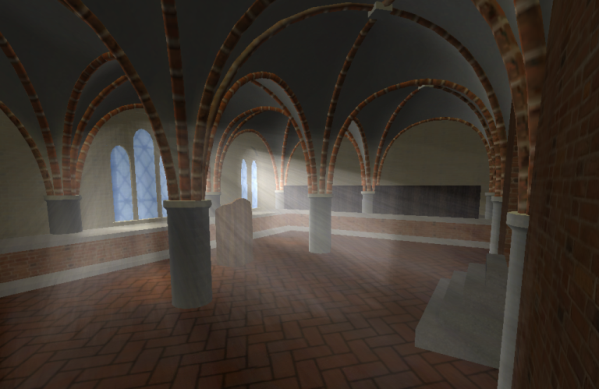
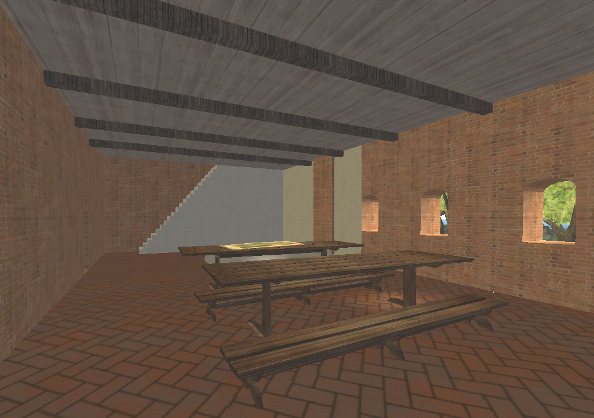
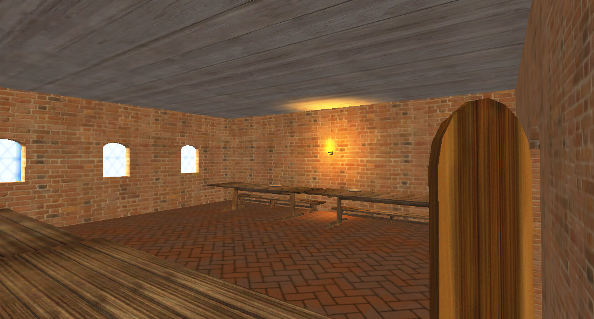
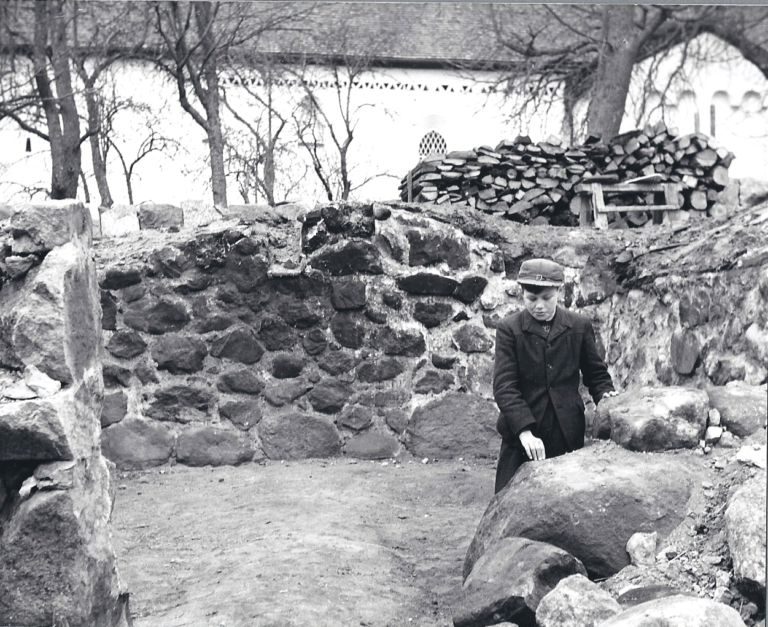
The only parts of the abbey that remains today is the church, known as the church of Askeby abbey, and some foundation walls in the south end. The bell house “rescued” some of the remains, in being built to replace the bell tower that was torn down after a fire in 1609. The first task in the virtual rebuilding, was to get a picture of what the abbey used to look like. An archaeological research was required. During the management of archaeologists from the Swedish national heritage board, an excavation and a geophysical examination of the area was carried through in 2002, after the Provincial Office had granted funding. The result constitutes a base for the markings of cloisters and abbey well.
But more material was needed! Experts within different subject areas were contacted to co-operate with the project group in the publishing of the book. “Askeby, the Abbey, and the Village” from 1999 was supplemented with “Askeby Abbey – Monastic Days and Life” (2008), and “Askeby Abbey in a New Light” (2010).
With support from the educational association, Sensus, a workshop was carried through in 2006. The group consisted of about twenty participants from the area who studied the abbey and village’s growth during the Middle Ages, with an emphasize on the 15th century.
In 2006, the project team, along with the Institute for Religion and Culture at Linköping University, arranged a seminar about the Askeby abbey. Experts from the Swedish national heritage board in Stockholm and Linköping participated along with employees from the Museum of Östergötland and researchers from the university. Several of the participants contributed in writing articles and reports.
The economy was resolved by funding from the diocese of Westman-Wernerska, diocese of Alfa, the church council in Askeby, Askeby Preservation Society, the Department of Culture and Recreation in Linköping municipality, diocese of Lagerfelt, diocese of Linköping/church committee of Åkerbo, and Östsam.
The project group had previously been in contact with the corporation of Sciss AB who, on behalf of Linköping University and Garrison Museum, had developed a computer animation of the area in Tinnerö, on the old training field south of Linköping town centre. Their experiences were considered to be of great value when starting the work with the abbey. In 2006 there was a commission from municipal to build a computer animation showing Askeby abbey in 1444. Even for Sciss, this work was considered to be a challenge, as they had to “try out the potential of this market, where different cultures are fundamentally united.”
The project aiming has consequently been to demonstrate how the abbey and the village/society have interacted. This is why it became important to show how the surroundings appeared. Överstad village was chosen as an example of a village near the old abbey area. In 2010, the Interactive Institute developed a visualization of Överstad. In this visualization the basis is taken from old cartographic documents in order to create an image of the fields’ and roads’ appearances and positions.
Read more about the work and thoughts behind the visualizations of Askeby abbey and Överstad village in the book “Nytt ljus över Askeby kloster” (Askeby Abbey in a New Light).
